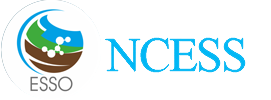Centre for Earth Science Studies in collaboration with Indian National Centre for Ocean Information Services (INCOIS) under the Ministry of Earth Sciences (MoES), Government of India has recently installed first of two stations scheduled off Coastal waters of Kerala at 30m depth off Trivandrum. The coastal station will give real time data on coastal weather conditions which includes tide, current and wave parameters. This information is vital to the local community,
especially the fishermen during extreme weather conditions for safe planning of their activities and also in identification of potential fishing zones. The real time data will also be disseminated to the various scientific communities/research organizations/institutes to carry out research on coastal hydrodynamics and applications of sea-state forecasting.
How it works
The Datawell Directional Waverider buoy installed off Trivandrum coast measures the wave height and period by measuring the vertical acceleration by means of an accelerometer placed on a gravity stabilized platform and by double integrating the acceleration to get the displacement. The direction of wave approach is measured based on the translational principle.
The data from the buoy are transmitted through VHF/GSM/INSAT-1C satellite system to the shore station located at CESS Thiruvananthapuram at synoptic hours. The data transmission is at every three hour interval. Also, the data from GPS mounted on the wave rider buoy can be used to monitor the position of the buoy continuously and in tracking the buoy. The data received from the buoy would be then sent on real-time to INCOIS, Hyderabad for further dissemination to the operational users such as India Meterological Dept (IMD), Coast Guard (CG), INCOIS, Navy, ONGC and other agencies.
Proposed activities
- Disseminate the data to the users particularly to the fishermen and coastal community by organising workshops and by employing methods of mass communication like television, radio, news paper, VHF, etc.
- Real time validation of sea state forecast for the Kerala coast by INCOIS
- Dissemination of sea state conditions and potential fishing zone through electronic display board being established at Vizhinjam fishing harbour and other important fishing harbours.
End users
The wav-rider buoy data would be extensively used for the calibration of observations made by the satellite sensors and for various applications in fisheries, coastal zone management, oil exploration, offshore/coastal engineering works and for field of calibration and validation of sea-state forecasting model.
Following is a short list of potential state and national level users:
- India Meteorological Department (IMD) for daily operational weather forecasting and timely cyclone warning.
- National Center for Medium Range Weather Forecasting (NCMWRF) for validation of their forecasting model.
- Indian Coast Guard for planning their ship operational requirements so as to ensure safety of life at sea.
- Space Application Centre (SAC), Ahmedabad for validation of their satellite data and other research work.
- Indian Naval Hydrographic Department (INHD) for issuing sailing notification/ updating their bulletins to sailors.
- Various Ports (Cochin, Vizhinjam etc) for efficient management of vessel traffic and other activities related to port development
- Oil and Natural Gas Corporation Limited for planning, scheduling and implementation of their exploration activities
- Indian Climate Research Programme, IISc, Bangalore for their research activities on Climate.
- Research/scientific community: National Physical Oceanographic Laboratory (NPOL), Central Marine Fisheries Research Institute(CMFRI), State level (Universities of Kerala, Cochin and Calicut) and National level (Andhra University) Universities both for their research activities and academic programmes.




 सूचना का अधिकार
सूचना का अधिकार

